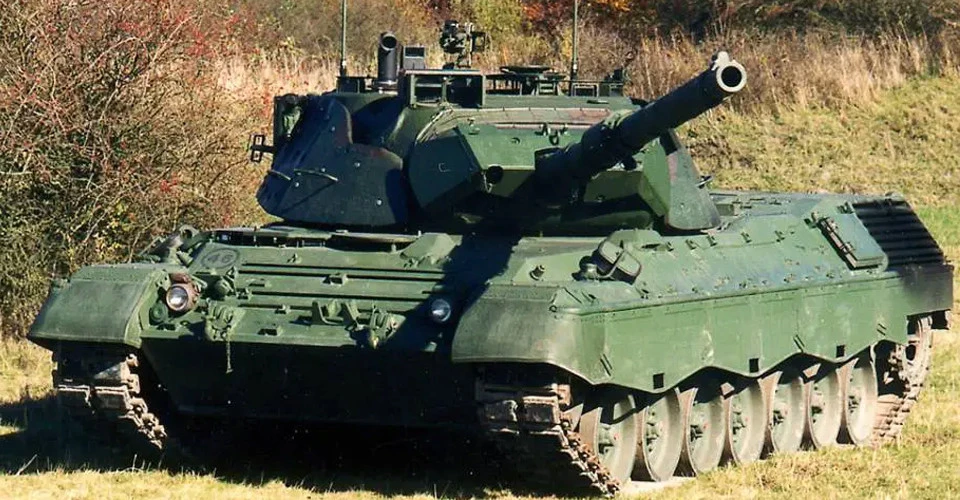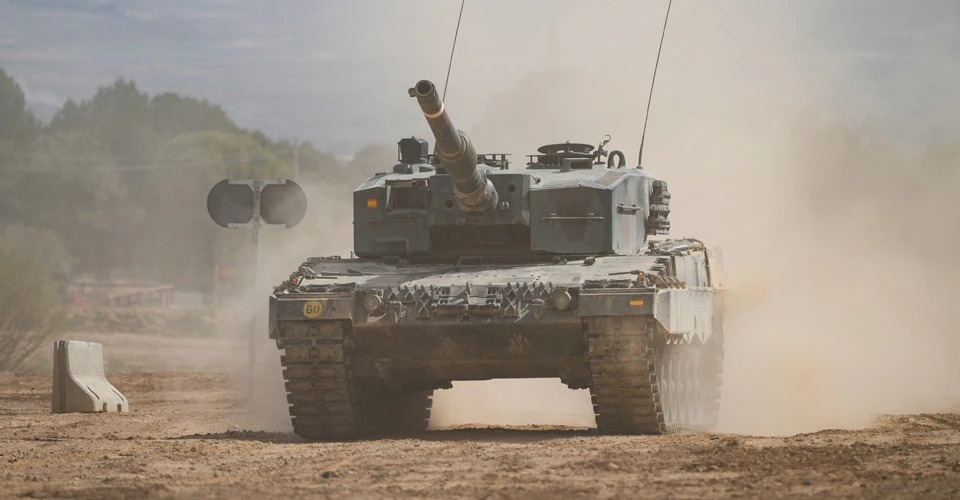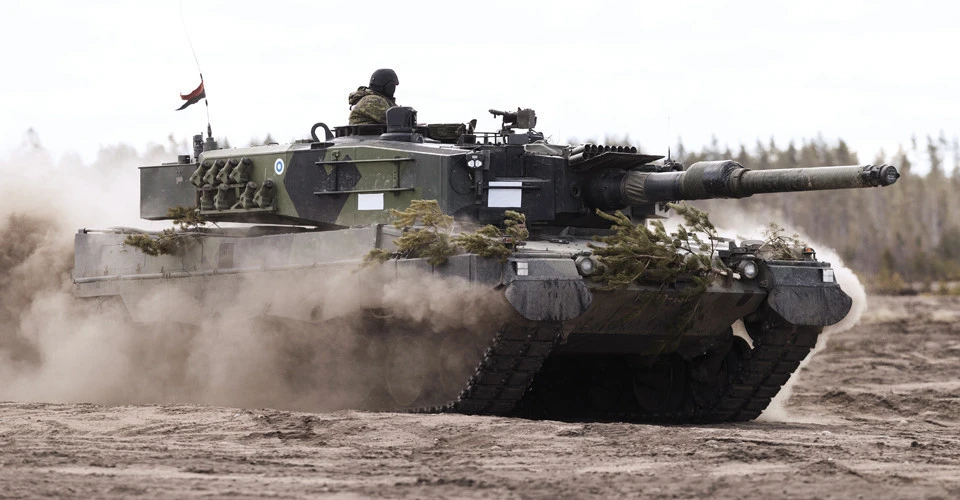
Why are Leopard tanks important in Ukraine's counteroffensive?
Ukraine's allies have promised hundreds of Leopards of various modifications, some of which are already performing combat missions, while others are on their way. Here's why German tanks are important for the Ukrainian Armed Forces' success on the battlefield
The beginning of 2023 was marked by a massive public call to 'free the Leopards,' meaning that the German government should allow the transfer of its tanks to Ukraine. At the end of January, Chancellor Olaf Scholz approved this decision, unblocking the possibility of supplying these combat vehicles to other countries. After that, the Germans began to actively search for Leopards that could be delivered to Ukraine after a comprehensive repair. Intensive training of Ukrainian tankers began. Every month, new countries were added to the tank coalition that had Leopards in service and were ready to transfer them to Ukraine.
How many German tanks will Ukraine have?
In early April, German Defense Minister Boris Pistorius said that NATO member states intend to transfer two battalions of Leopard 2 and four battalions of Leopard 1 to Kyiv. In total, Ukraine will receive six battalions with German Leopard tanks of various configurations. The total number of combat vehicles will be 160. Later, however, other countries began to increase the number of tanks they were willing to transfer. Currently, we are talking about almost a hundred Leopard 2 tanks and about two hundred Leopard 1 tanks, which should be put into service with the Ukrainian Armed Forces by the end of 2023.
Who produces Leopards and what modifications are available?
The Leopard 1 was the first German tank to be produced after World War II. In the 1950s, German and French engineers developed this tank. The main focus was on the striking power and maneuverability of the vehicle. This tank entered service in 1965. By 1984, 4,744 units had been produced. It was adopted by 12 countries on four continents.

Photo: gettyimages / Leopard 1A5
Thanks to modernization programs, it is still in service in many countries. There are several modifications of this tank: from Leopard A1 to Leopard A5. Ukraine has been promised tanks of the latest Leopard A5 modification, which has a 105-mm gun that can penetrate 450-500 mm armor at a distance of 2 km. In addition, the chassis from the Leopard 1 tank is the basis for the Gepard self-propelled artillery system, several dozen of which are guarding the Ukrainian sky.
Instead, the Leopard 2, a third-generation battle tank developed by the German company Krauss-Maffei in the 1970s, entered service in 1979 to replace the Leopard 1. Various versions are used in the German Armed Forces and 13 other European countries, as well as several non-European countries, including Canada, Chile, Indonesia, and Singapore. To date, more than three thousand of these combat vehicles have been produced.
The main armament of the production version of the Leopard 2 tank is a 120 mm Rheinmetall smoothbore gun, the same as the one used on the American M1 Abrams tanks. The gun's ammunition consists of 27 rounds, which are stored in a special magazine in the forward part of the hull. The gun can fire various types of ammunition.
For more than 40 years of operation, the Leopard 2 has undergone many modifications, from the Leopard 2 A1 to the Leopard 2 A8, and there are also various modifications to suit the needs of different countries. The allies provide Ukraine with the most popular variants, mainly A4 and A6.
The most common version of the Leopard 2 family is the A4 model. Compared to older versions, the Leopard 2 A4 has an automatic fire extinguishing system, a full digital fire control system for new types of ammunition, and an improved turret with flat titanium/tungsten armor. It should be noted that Leopard 2 A4 tanks were mass-produced from 1985 to 1992.

Photo: gettyimages / Leopard 2A4
As for the Leopard 2 A6, it has a new 120 mm Rheinmetall L55 smoothbore gun and other changes. All German tank battalions of the so-called Crisis Intervention Force are equipped with A6 tanks.
Read also: What are features of British Challenger 2 tank and when will it arrive in Ukraine?
Where were the Leopards used?
The Leopard 2 is a tank that has been tested not only in theory but also in the practice of combat operations. In particular, it was used by the German army in Kosovo and during the 2001 conflict in Macedonia, by the Dutch, Danish and Canadian armies in Afghanistan as part of the International Security Assistance Force, and is also used by the Turkish army in combat operations in Syria. It was in the fighting against ISIS that Leopard 2 tanks from the Turkish Armed Forces suffered heavy losses. Prior to that, even in Kosovo and Afghanistan, Leopards did not suffer such significant damage. As of 2017, the Turks have lost more than 10 German tanks in the war against ISIS. Nevertheless, these tanks have proven to be able to withstand a mine attack, saving the lives of the crew.

Photo: gettyimages / Leopard 2A6
Why are German tanks valuable for the Ukrainian Armed Forces?
Until the beginning of this year, Ukraine had Soviet-era battle tanks, including the T-72 and T-80. Many experts consider the Leopard 2 to be the best battle tank in the world. It weighs more than 60 tons, is about ten meters long, and can reach speeds of up to 70 km/h. With its 120mm smoothbore gun, the Leopard can hit targets at a distance of several thousand meters, both standing and in motion. The advantages of German tanks lie in the combination of firepower, armor protection and mobility, thus far outstripping the capabilities of similar Russian tanks.
Although tanks are heavy and visible on the battlefield, they are indispensable in land offensive operations. Dozens of new armed brigades have been deployed in Ukraine, and they need military equipment, namely tanks with heavy guns. Therefore, whether old Leopard 1s or newer Leopard 2s, these are the vehicles that can make both counteroffensives and deter enemy advancement successfully.
The beginning of June showed that, thanks to Western tanks, the Ukrainian Armed Forces are able to change the frontline and gradually break through enemy defense lines. In particular, as has already happened in the Zaporizhzhia sector. Therefore, the more tanks Ukraine manages to get, the greater will be the chances of a quick liberation of the occupied territories.
- News














































